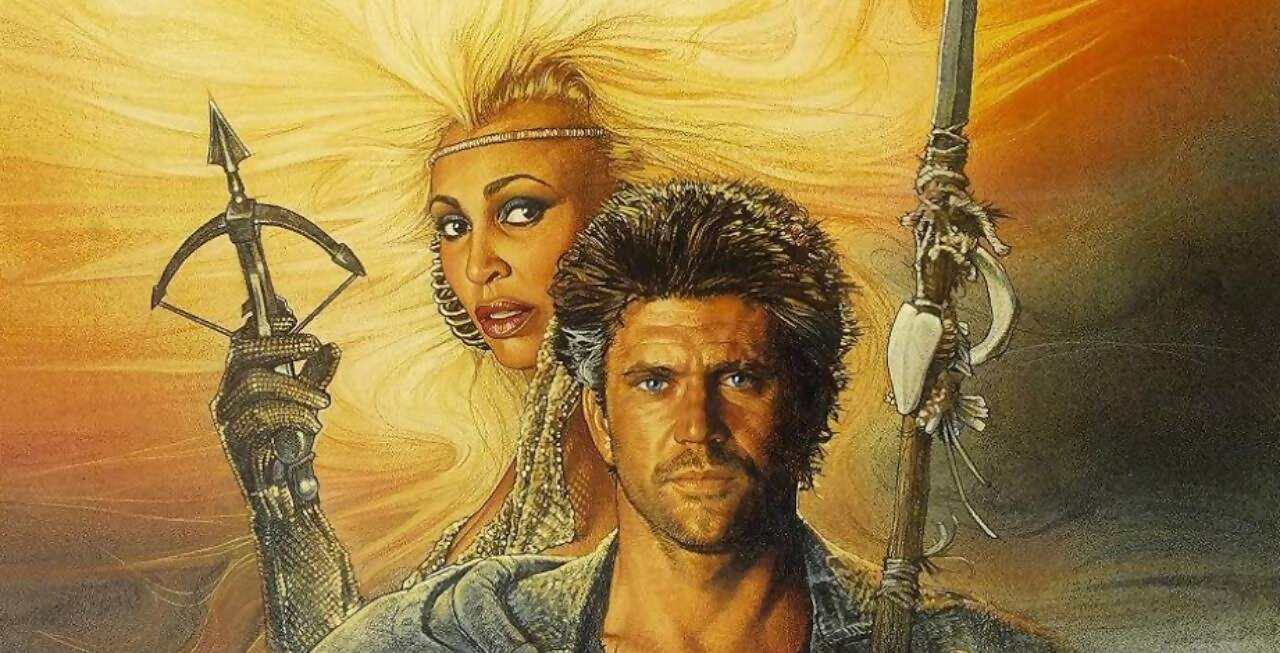
To mark its 40th anniversary, we look back at Mad Max Beyond Thunderdome, a less celebrated sequel that still has moments of true brilliance.
Director George Miller never did like to make things easy for himself. Not content with staging some increasingly jaw-dropping vehicular stunts in his breakthrough 1979 film Mad Max and its 1981 sequel, The Road Warrior, the filmmaker threw further complications into the mix for 1985’s Mad Max Beyond Thunderdome. The old adage that you should never work with children or animals? In Beyond Thunderdome, Miller worked with both.
Its budget amounting to about $10m, the third Mad Max was the most expensive Australian film yet made at the time, with the money spent on delivering one of the weirdest post-apocalyptic adventures ever committed to celluloid. Although favourably received by critics at the time, the lingering consensus over Beyond Thunderdome tends to be that it’s too soft, too muddled, and too silly to compare to either its predecessors or the Mad Max movies Miller made much later. Certainly, the box office seemed to back this thinking up at the time; although it cost twice as much as Mad Max 2, Beyond Thunderdome made about half as much in Australian cinemas.
It’s arguable, however, that time has been unusually kind to Miller’s third opus. Tina Turner’s performance, outfit and theme songs have long since acquired legendary status. The film’s production design and practical stunts have also aged superbly, and viewed today, Beyond Thunderdrome emerges as a much smarter, more subversive movie than it might first appear.
As Beyond Thunderdome reaches its 40th anniversary – and with an official set of photographs featuring its co-star Tina Turner emerging on the late star’s website – here’s a look back at the film’s making, and why the time’s right for its reappraisal.
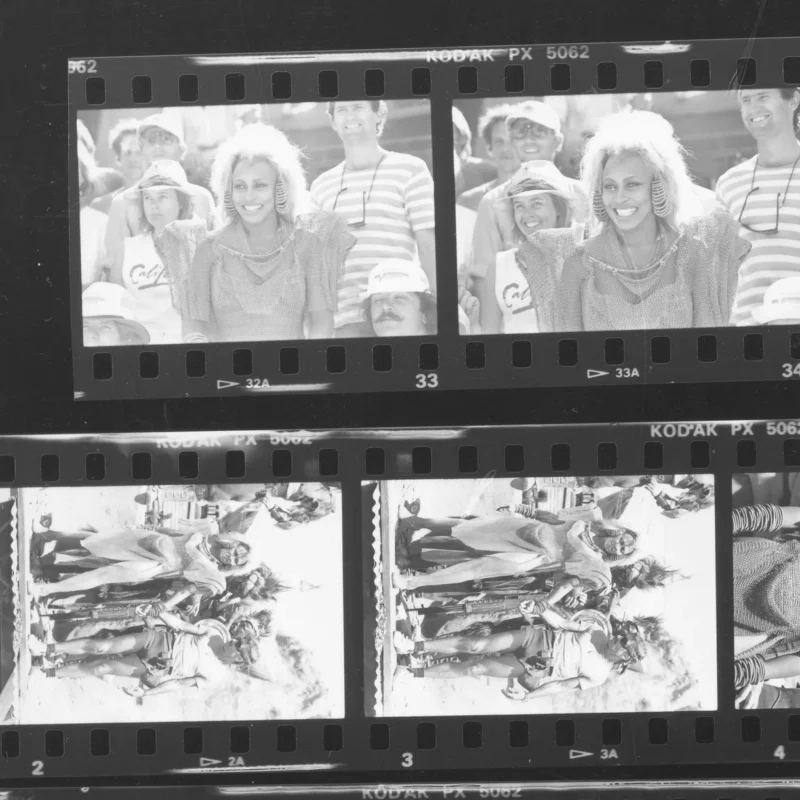
It came from the desert
Fifteen years after the events of The Road Warrior, Max Rockatansky (Mel Gibson) is trekking through the desert when his camel-drawn wagon is stolen by thieves. Trudging through the sands, he finds Bartertown – a cobbled-together microcosm of a modern city. There, Max meets its founder and charismatic leader, Aunty Entity (Tina Turner, clad in a now-iconic chainmail dress), fights a gladiatorial battle in the titular Thunderdome, and is then sent into exile.
Back out in the desert, Max almost dies of dehydration before he’s rescued by a young warrior and taken back to a leafy idyll named Planet Erf. Here, the young survivors of a crashed passenger plane have formed a curious society of their own, complete with its own religion; they prophesy that their plane’s pilot, Captain Walker, will one day return to fly them back home. Seeing Max, they immediately assume he’s their messiah – a role the antihero has no interest in filling. Eventually, however, events force the worlds of Bartertown and Planet Erf collide, leading to a final high-octane pursuit across the desert.
Unfolding like a fever dream remake of Lawrence Of Arabia, Beyond Thunderdome packs in a remarkable amount of plot for a sub-two-hour movie – and something of a redemption arc for Max, who goes from haggard mercenary to reluctant saviour by the fiery climax.
The background to Beyond Thunderdome’s production provides some insight into the finished film’s unusually hopeful tone. In 1983, Byron Kennedy, who co-created Max Max with Miller, died in a helicopter crash at the tragically young age of 33. Devastated by the loss of someone he’d collaborated with since the start of his career, Miller initially swore off making a third Max Max without Kennedy by his side.
Eventually, Miller relented, reasoning that making Mad Max 3 could be a means of processing the “shock and grief” he felt at the time. The resulting script, co-written by Terry Hayes (also a co-writer on The Road Warrior), was intentionally lighter than the two previous movies – particularly 1979’s Mad Max, which was essentially a pre-apocalyptic revenge flick in the vein of Death Wish. Mel Gibson’s wild-eyed performance as highway cop Max, hunting a motorcycle gang in the middle in a near-future Australia, made him a star.
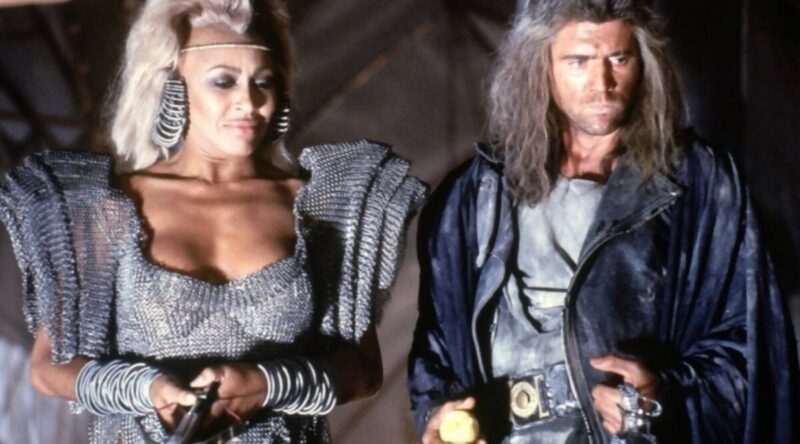
For Beyond Thunderdome, Hayes and Miller imagined Max roaming a scorched wasteland and encountering an assortment of communities that have been warped by society’s collapse. Hayes later said that he first came up with the idea of Max meeting a Peter Pan-like tribe of lost children first – a concept added to give the story “real heart.”
The shift from the bracingly aggressive Mad Max 2 and its lighter sequel could also be explained by its co-director, George Ogilvie. The early to mid 1980s was a busy period for Miller, with the filmmaker having made a segment of the ill-starred Twilight Zone: The Movie (1983) as well as either producing or co-directing Australian TV dramas: The Dismissal (1983) and The Cowra Breakout (1984). For Beyond Thunderdome, Miller therefore decided to bring in Ogilvie (who co-directed The Dismissal) to help share the considerable workload.
Ogilvie, a 50-something veteran of theatre, opera and drama teaching, had a natural way with actors. Behind the scenes footage in an Australian TV documentary, logically called The Making Of Mad Max Beyond Thunderdome, shows him patiently yet firmly talking a large supporting cast of young actors through their scenes. Calm and softly spoken, it’s possible that his sensibility provided an artistic counterpoint to Miller’s taste for the outrageous.
That documentary also provides a flavour of the film’s huge scope. The production called for the construction of the sprawling Bartertown, built in a brick factory in Sydney; a sequence involving the fuselage of a crashed passenger plane sticking out of the desert; and the wrangling of about 400 pigs and at least a dozen camels. The latter, in particular, failed to endear themselves to Ogilvie. The filmmaker was particularly irked by one camel, named Rodney; footage shows the crew desperately trying to keep the raging beast under control as the desert sun beats down. Mel Gibson watches from a distance, chuckling to himself.
“I never thought I’d get to hate a creature on this Earth,” Ogilvie murmurs. “But I did get to hate Rodney.”
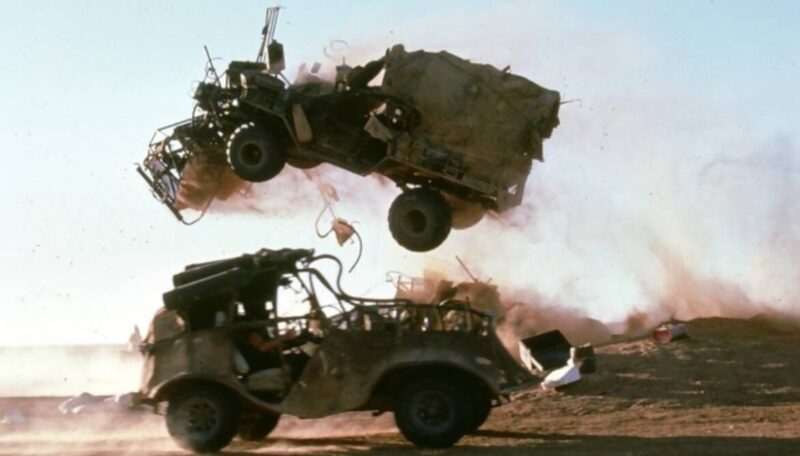
Collision course
Although there are fewer set-pieces involving vehicles than the previous two films, Beyond Thunderdome is topped and tailed with a pair of sequences that were shot with the same go-for-broke boldness of its predecessors. The final act chase, in which Max and his compatriots flee on a ramshackle locomotive pursued by the enraged inhabitants of Bartertown, was shot on a working trainline. Every so often, the production would hear the sound of a real train coming down the track and was forced to shut down for several hours until it passed.
As the production crashed cars and let off explosions in the middle of the Great Stony Desert, Tina Turner sat and watched with evident glee. Miller had written the Aunty Entity role specifically with the rock legend in mind – and, despite her relative inexperience as an actor, Turner threw herself into the role, eating up Hayes and Miller’s poetic, literary dialogue. She was also unafraid of getting her hands dirty – literally – with the stunts. Rather than have a stuntperson take over, Turner insisted on driving her character’s ungainly buggy herself.
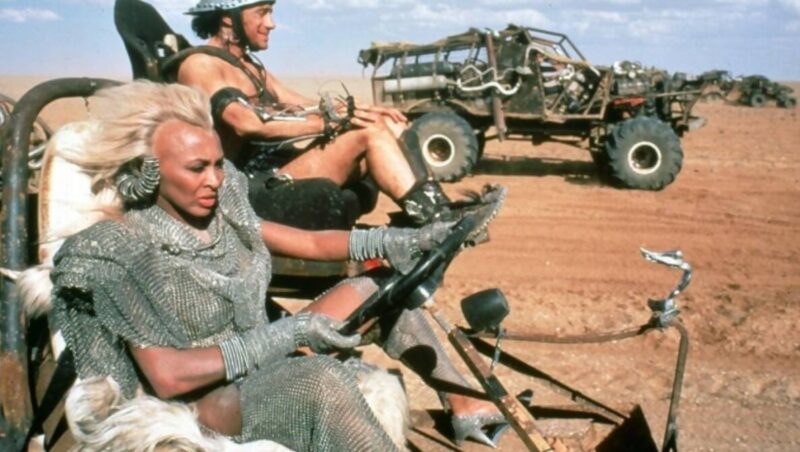
Even when she wasn’t required for a scene, Turner later said that she preferred being on set to the refuge of her air-conditioned trailer; there’s footage from the production which shows the singer turned actor sitting behind Miller as he directs a scene. Turner clearly enjoyed collaborating with Miller on developing Aunty Entity’s character; there’s a revealing moment in the making-of documentary in which she suggests a parting line between her and Max. Initially, Miller’s resistant to the idea. Turner gently explains her thinking – that it’s a sign of respect between two survivors of the apocalypse – and Miller nods and agrees. Her simple yet effective line is in the finished movie: “Goodbye, soldier.”
The French photographer Jean Guichard was also on set as Beyond Thunderdome filmed in the outback. His photographs, available to purchase in August as an official limited edition contact sheet, show Tina Turner, in her iconic Aunty Entity chainmail dress, smiling and posing with Ogilvie and Miller. The shoot may have been hot, dusty and challenging, but Turner appeared to relish every minute. “It’s an experience I’ll never forget,” she said at the time.
The finished film revels in its own twisted yet warm-hearted creativity. Ever the satirist, Miller pokes fun at the hyper-capitalist Reagan era through Bartertown – an enclave where everyone’s hustling to make money, and whose prosperity hinges on a particularly noxious kind of gas.
In order to maintain control, Aunty Entity even goes on a bout of Margaret Thatcher-style union smashing. Her target: a pair of characters collectively known as Master Blaster. Essentially the brain and brawn that oversee Bartertown’s energy production, they’ve become too powerful for their own good in Aunty’s estimation, and so Max is asked to kill the Blaster, who protects the diminutive Master. “Keep the brain, dump the body,” is how it’s laid out to Max.
(The power grab in Bartertown is contrasted by the inhabitants of Planet Erf, whose beliefs could be read as a not unaffectionate jab at organised religion.)
Zooming further out, the movie as a whole could also be regarded as a satire or pastiche of the movies Steven Spielberg and his production company Amblin were releasing in the mid-1980s. With its cute kids, upbeat score and comedy-infused moments of adventure, Beyond Thunderdrome almost looks like The Temple Of Doom or The Goonies filtered through Miller’s febrile mind. There’s a shred of evidence to back up this theory; as noted in a 1985 edition of Starlog magazine, a portrait of a creature from Joe Dante’s Gremlins can be spotted in Bartertown. Elsewhere, there’s also a shop with a sign above which reads, ‘Proprietor: E.T. Spielberg.’
Admittedly, there’s a somewhat jarring tonal shift as Max goes from one tribe to the next, and the story lacks an overarching villain or motivation to truly drive it along. All the same, Beyond Thunderdome is spectacular to look at, with exquisite cinematography by Dean Semler; and as a practical piece of filmmaking, it looks more impressive now than it did 40 years ago. Besides a handful of matte and miniature shots near the end, pretty much everything in Beyond Thunderdome – to its elasticated arena battle to its Buster Keaton-inspired loco climax – was captured in-camera.
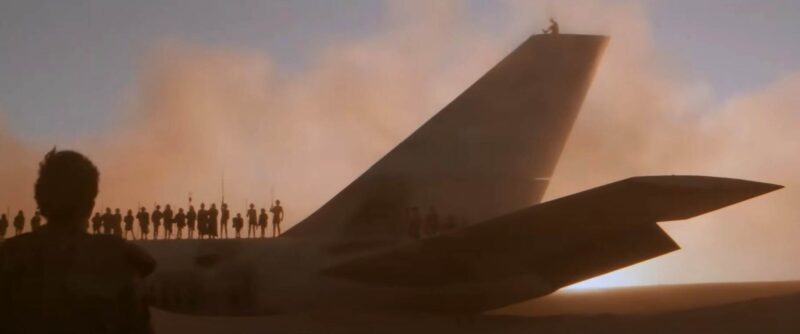
In the context of the series as a whole, Beyond Thunderdome may be different from the rest, but in retrospect, the scale of its worldbuilding makes it a logical midpoint between its two predecessors and the detailed, wildly ambitious Fury Road and Furiosa in the 21st century. Certainly, Miller himself once regarded Beyond Thunderdome as his favourite of those first three movies, even as he recognised its flaws.
“Of all the films, it’s the one I have most affection for,” Miller said in 2006, “even though most people wouldn’t agree. I realise looking back on it that we almost took on too much story. We told about two or three different worlds, trying to […] juggle all those things together.”
Fans may regard Beyond Thunderdrome as a weaker entry in the Mad Max series, but maybe that says more about the consistent brilliance of the movies as a whole. Through them, Miller and his collaborators conjure up a shattered world that lampoons the worst excesses of our own, while also offering at least a sliver of hope amid the blood and dirt.








